Are you tired of constantly feeling like you’re driving with the parking brake on? This may be due to your vehicle’s torque converter lock up being engaged. The torque converter is a type of fluid coupling that connects the engine to the transmission.
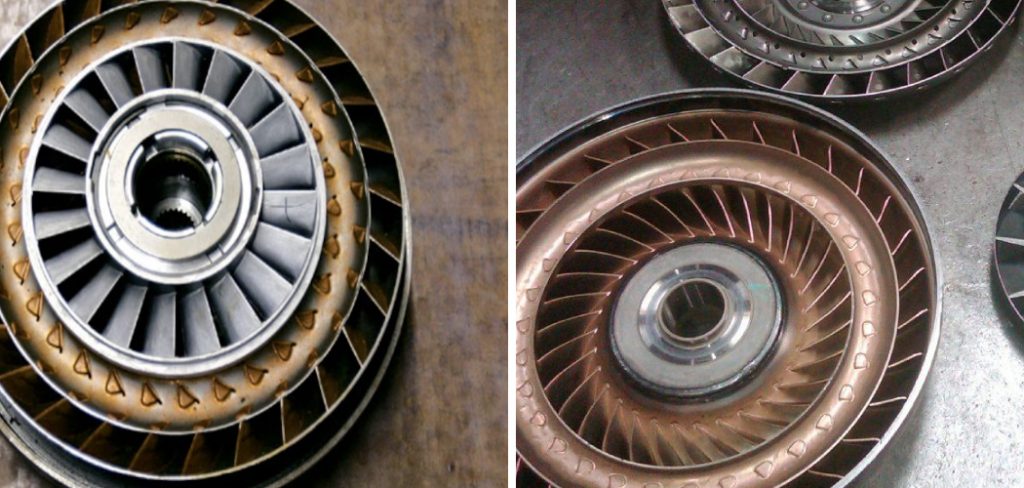
The torque converter lock-up mechanism plays a crucial role in maintaining the balance between fuel efficiency and driveability in vehicles with automatic transmissions. However, there are certain situations where disabling the torque converter lock-up may be desirable or necessary, such as when diagnosing transmission issues or when seeking a specific driving behavior.
This guide intends to provide a step-by-step process on how to disable torque converter lock up, ensuring you understand the implications and the proper methods for your vehicle without compromising its performance or longevity.
When Should You Disable Torque Converter Lock-Up?
Before we dive into the steps to disable torque converter lock up, it is essential to understand when it may be necessary or advantageous to do so. The following are some common instances where you may need to disable the torque converter lock-up:
- Diagnosing Transmission Issues: When troubleshooting transmission problems, disabling torque converter lock-up can help isolate the issue and prevent further damage. This is because the lock-up mechanism can sometimes mask underlying transmission issues, making it difficult to identify the root cause.
- Towing or Heavy Payloads: If you’re towing a heavy load or carrying a heavy payload, disabling torque converter lock-up can provide more power and control when accelerating or climbing hills. This is because the lock-up mechanism can cause the engine to lug or struggle, making it difficult to maintain speed in these situations.
- Improved Performance: In some cases, disabling torque converter lock-up can provide improved performance and drivability. This is because the lock-up mechanism can cause sluggish acceleration and a delay in power delivery as the vehicle transitions between gears. However, this may not apply to all vehicles and should be approached carefully.
Now that we have established some scenarios where disabling torque converter lock-up may be necessary let’s get into the steps on how to do it.
What Will You Need?
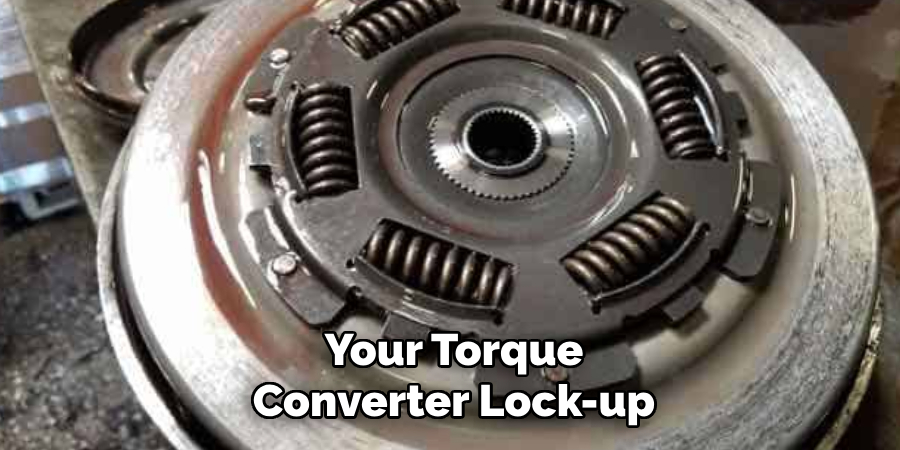
Before beginning the process of disabling your torque converter lock-up, make sure you have all the necessary tools and materials at hand. This will help ensure a smooth and efficient procedure without the need for multiple trips to the store or risking damage to your vehicle.
- A set of essential hand tools (socket wrench, screwdrivers, pliers)
- Jack and jack stands or ramps
- Vehicle owner’s manual for reference
- Consultation with a mechanic or professional for guidance
Once you have everything ready, you can proceed with the steps below.
10 Easy Steps on How to Disable Torque Converter Lock Up
Step 1. Locate the Torque Converter:
The first step in the process is to identify where the torque converter is situated in your vehicle. It is typically found sandwiched between the engine and the transmission, appearing as a sizable metallic drum.
Understanding its location is crucial as it plays a key role in transferring power from the engine to the vehicle’s transmission. For most vehicles, you can access the torque converter from underneath the car; hence, the vehicle should be safely lifted using a jack and properly supported by jack stands or ramped before proceeding.
Step 2. Disconnect the Battery:
Before working on any component of your vehicle, it is critical to ensure your safety and the protection of the vehicle’s electrical system.
Disconnect the battery by removing the negative cable, which will prevent any electrical surges that could potentially cause harm or vehicle malfunctions while you work on the torque converter. Additionally, removing the negative battery cable is also a necessary precaution to avoid accidental vehicle movement during the procedure.
Step 3. Identify the Solenoid Connector:
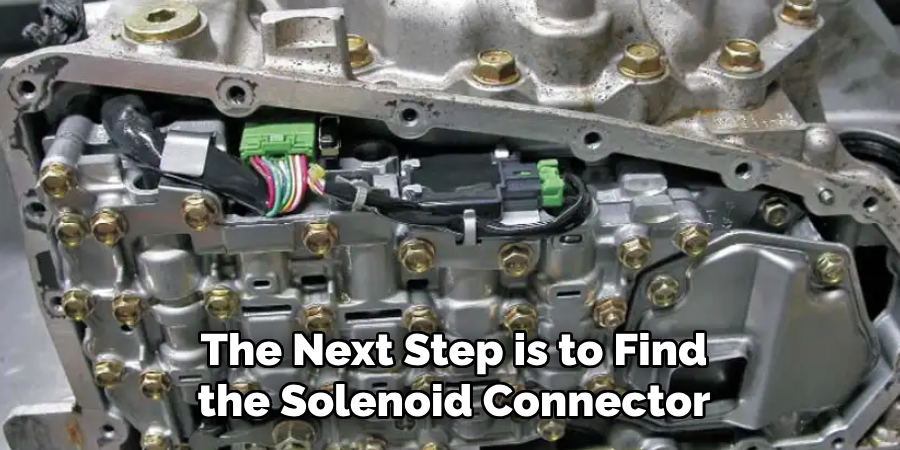
Once you have located and accessed the torque converter, the next step is to find the solenoid connector. This solenoid is an electromechanical device responsible for controlling the torque converter lock-up mechanism. You will typically find this component situated on the transmission body, with wiring that connects it to the engine control unit (ECU).
Look for a connector grouping or wiring harness that leads to the transmission; among these, the solenoid connector will be distinguishable. Consult your vehicle’s service manual if you need help to identify the correct connector. It is imperative to handle the solenoid and its connector with care to avoid damage and potential future malfunctions.
Step 4. Disconnect the Solenoid Connector:
Carefully disconnect the solenoid connector, which is the link between the solenoid and the vehicle’s ECU. This will disable the signals to the torque converter’s lock-up mechanism. Make sure to pull on the connector itself, not the wires, to prevent damage.
In some vehicles, you may need to release a clip or a latch to separate the connector. Once removed, inspect the connector and wiring for any signs of wear or damage and address any issues before proceeding to the next step. Remember to keep the connector in a safe place to avoid dirt and moisture contamination.
Step 5. Secure the Solenoid Connector:
Once you have disconnected the solenoid connector, it is essential to secure it in a way that it does not interfere with any moving parts or become damaged. Use zip ties or electrical tape to fasten the connector to an area that is free from heat and motion.
This precautionary step prevents the connector from accidental contact, which may trigger the check engine light or potentially lead to electrical shorts. Ensure that the securing setup does not put a strain on the wiring and the connector is well-protected from the elements and road debris.
Step 6. Test the Vehicle:
After securing the solenoid connector, it’s essential to test drive your vehicle to ensure that the torque converter lock-up has been successfully disabled. Start the car and take it for a drive in an area free from traffic. Pay close attention to the transmission behavior, particularly during the speeds at which the lock-up usually engages.

If done correctly, the torque converter should not lock up, and you should feel a consistent drive without the previously locked sensation. Monitor the dashboard for any warning lights that might indicate an issue.
If the vehicle behaves as expected and no warning lights present themselves, your disablement has been successful. However, if there are issues, double-check your work to ensure that everything has been done correctly and securely.
Step 7. Reconnect the Battery:
After confirming the successful disablement of the torque converter lock-up, it is time to reconnect the battery. Carefully reattach the negative cable to the battery terminal and ensure that the connection is secure. This re-establishment of power is essential for the vehicle’s electrical system and should be done carefully to prevent sparking or electrical shorts.
Once connected, start your car to ensure that all systems are functioning correctly and that there are no warning lights on the dashboard. If all checks out, the electrical system is restored, and your vehicle is ready for regular use.
Step 8. Inspect for Leaks or Damage:
After reconnecting the battery and ensuring the vehicle is functioning correctly, it’s essential to conduct a thorough inspection for any potential leaks or damage that may have occurred during the process. Check around the transmission and the area where the solenoid connector was disconnected for any signs of oil or transmission fluid leaks.
Additionally, inspect all electrical connections and wiring that have been handled to ensure they are intact and have not been compromised during the procedure. Address any abnormalities immediately to maintain the integrity and safety of your vehicle’s operation. If everything appears to be in order, you can proceed to the next step with confidence.
Step 9. Lower the Vehicle:
Once all inspections are complete and it’s confirmed that everything is functioning as it should, carefully lower the vehicle back to the ground. Remove any jack stands or ramps that were used to elevate the vehicle safely.
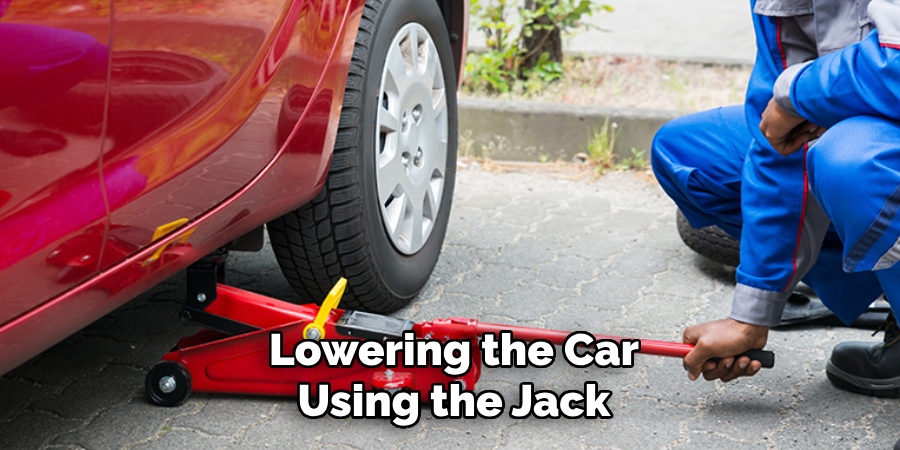
Ensure they are completely clear from underneath before gently lowering the car using the jack, making sure to keep your hands and feet clear of the vehicle’s path as it descends. Once the car is securely on the ground, give it a gentle shake to ensure it is stable before removing the jack entirely. Your vehicle is generally ready to be driven with the torque converter lock-up disabled.
Step 10. Conduct a Final System Check:
Before considering the torque converter lock-up disablement procedure fully complete, it’s advisable to run one last system check. Start the engine and allow it to reach normal operating temperature, then inspect the behavior of the transmission once more during a test drive. Keep an ear out for anything out of the ordinary, such as unusual noises or shifts in the transmission.
Make sure to monitor the vehicle’s performance and any dashboard signals carefully. If all is in order, make a note of the procedure in your vehicle maintenance log. The log will help keep track of this and future modifications or maintenance procedures, which could be valuable for troubleshooting or if the vehicle changes hands.
By following these steps and taking the necessary precautions, you can safely disable your vehicle’s torque converter lock-up. It is essential to handle this task with care and attention to detail to avoid any potential damage or malfunctions in the future.
5 Additional Tips and Tricks
- Consult the Vehicle’s Service Manual: Before attempting any modifications, refer to your vehicle’s service manual for specific instructions on the torque converter, as it may provide crucial information tailored to your car’s make and model.
- Transmission Control Module (TCM) Adjustment: In some vehicles, you can use a diagnostic scanner to access the TCM and adjust the settings that control the torque converter lock-up points.
- Aftermarket Kits: Consider installing an aftermarket kit to bypass the torque converter lock-up. These kits typically come with all necessary components and a set of detailed instructions.
- Custom Tuning: Professional custom tuning can adjust the parameters of the engine and transmission control modules, including the behavior of the torque converter lock-up. This must be done by a qualified technician.
- Transmission Fluid Temperature (TFT) Sensor: In certain models, the torque converter is controlled by the TFT sensor. Adjusting or modifying its readings can affect the lock-up mechanism. However, this method requires advanced knowledge and may impact transmission performance or longevity.
With these additional tips and tricks, you can further customize the behavior of your torque converter lock-up.
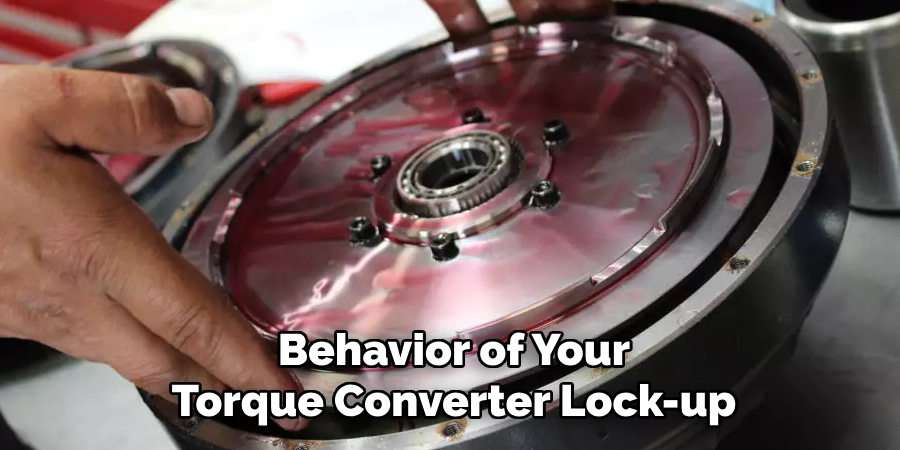
5 Things You Should Avoid
- Ignoring Transmission Warnings: Disabling the torque converter lock-up should not be done if your vehicle’s transmission is displaying warning signs or error codes. Ignoring these warnings can lead to severe damage to your transmission.
- Skipping Research: Don’t skip researching exactly how your vehicle’s torque converter lock-up functions. Each car may have different systems and requirements; not taking the time to understand them could result in improper modifications and damage.
- Overlooking Local Laws: Be aware of the legal implications of modifying your vehicle’s torque converter. Some modifications may not be legal in your area and could affect your vehicle’s emissions standards or roadworthiness.
- Neglecting Professional Advice: Attempting to disable the torque converter lock-up without professional advice can be risky. Professionals can identify any potential pitfalls and ensure that modifications do not harm other components of your transmission system.
- Forgetting to Test After Modifications: After any modifications, it is crucial to test your vehicle in a safe and controlled environment. Failing to test can lead to unexpected vehicle behavior on the road, which could be dangerous.
By avoiding these common mistakes, you can safely and effectively disable your torque converter lock-up system.
How Do You Unstick a Torque Converter?
If your torque converter has become stuck, there are a few steps you can take to try and fix the issue before resorting to replacing it entirely. Here are some possible solutions:
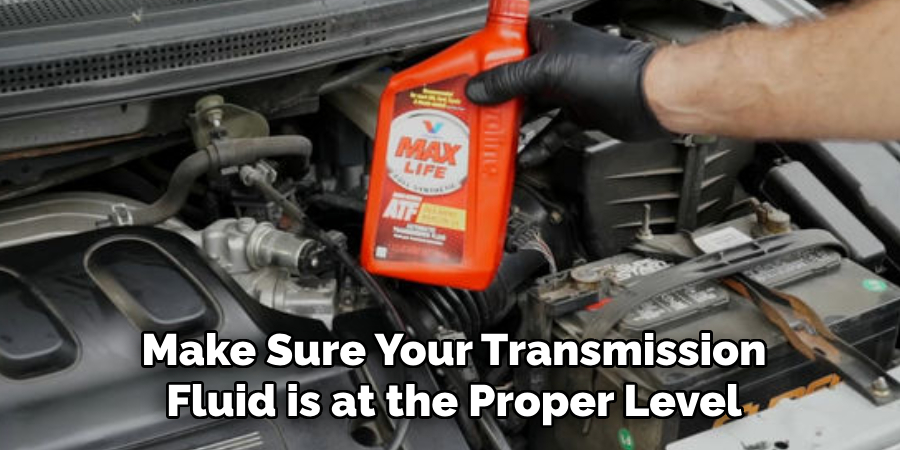
- Check Transmission Fluid Levels: Low transmission fluid levels can cause issues with the torque converter. Make sure your transmission fluid is at the proper level and top up if necessary.
- Flush the Transmission: If your transmission fluid is dirty or contaminated, a flush may be necessary to remove any debris causing the torque converter to stick.
- Inspect for Damage: Visually inspect the torque converter for any signs of damage or wear. If damaged, it will likely need to be replaced.
- Use a Lubricant: In some cases, using a lubricant designed explicitly for transmissions can help free up a stuck torque converter. Make sure to use one recommended for your vehicle’s specific information.
- Seek Professional Help: If these steps do not work, it is best to consult a professional mechanic who can diagnose and fix the issue with your torque converter.
In conclusion, properly maintaining and understanding your vehicle’s torque converter can help prevent issues and improve overall performance. If you decide to disable the torque converter lock-up, follow these tips and consult professionals for assistance if needed. So, it is essential to regularly check your transmission system and address any warning signs or issues promptly.
Can a Torque Converter Stay Locked?
Yes, a torque converter can stay locked in certain situations. Some vehicles have a “manual lock-up” feature, where you can manually engage and disengage the lock-up at any time. This is typically used for towing or heavy load situations to prevent excessive heat build-up in the transmission.

Additionally, some modern vehicles have a feature called “continuous variable transmission” (CVT), where the torque converter stays locked at all times. This results in better fuel efficiency and smoother driving, as there is no “slipping” between gears.
However, for most traditional automatic transmissions, it is essential to have a functioning lock-up system to prevent excessive heat and wear on the news and improve overall performance. Again, consulting your vehicle’s service manual for specific information on your particular model is recommended.
Overall, understanding how your vehicle’s torque converter operates and making educated decisions when it comes to modifications can help keep your transmission running smoothly for years to come. So, take the time to research and maintain your torque converter system properly to ensure optimal performance and longevity of your vehicle’s transmission.
Conclusion
In conclusion, disabling the torque converter lock-up can be a strategic move to tailor your vehicle’s performance to your specific needs, particularly in custom or high-performance applications. However, it’s crucial to approach this modification thoughtfully and knowledgeably.
Properly assess the state of your transmission, educate yourself on your vehicle’s specific requirements, weigh the legal and safety implications, and seek expert advice when necessary. By doing so and by cautiously testing post-modification, you can achieve the desired effect without compromising the integrity or safety of your vehicle’s transmission system.
Remember, while modifications can enhance performance, they should never jeopardize vehicle reliability or road safety.
The article on how to disable torque converter lock up has provided valuable insights and considerations for vehicle owners. With responsible modifications and proper maintenance, you can optimize your vehicle’s torque converter system for peak performance. Happy motoring!

About
JeepFixes Team is a skilled author for Jeep Fixes, bringing 6 years of expertise in crafting a wide range of jeep fixes. With a strong background in jeep fixes work, JeepFixes Team’s knowledge spans various types of fixtures, from decorative pieces to functional hardware, blending precision with creativity. His passion for jeep fixes and design has made him a trusted resource in the industry.
Professional Focus:
Expert in Jeep Fixes : JeepFixes Team aesthetic specializes in creating durable and innovative jeep fixes, offering both appeal and functionality. His work reflects a deep understanding of jeep fixes techniques and materials.
Sustainability Advocate : He is dedicated to using sustainable practices, ensuring that every fixture is crafted with eco-friendly methods while maintaining high-quality standards.
In his writing for jeep fixes, JeepFixes Team provides valuable insights into the latest trends, techniques, and practical advice for those passionate about jeep fixes, whether they are professionals or DIY enthusiasts. His focus on combining artistry with engineering helps others discover the true potential of jeep in design.
